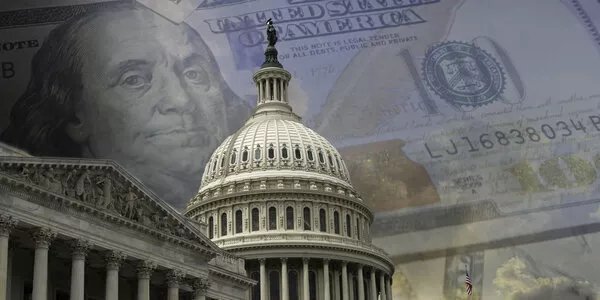
Weekly Update - Interest rates: what is the current reading of growth and inflation expectations?
Interest rates at different maturities make it possible to "read" market participants' expectations on inflation, growth and monetary policy. Since 2022, the very sharp rise in inflation and then its decline has been one of the main determinants of interest rates. The ongoing steepening of the yield curve now shows above all that market participants are reassured that inflation is under control. In France, the steeper steepening also illustrates some fears about the trajectory of public finances.
The yield curve, a leading indicator of the infallible cycle until 2022. The spread between long-term and short-term rates is a signal followed by many forecasters to forecast the phases of the economic cycle. It is even one of the components of the leading indicator of the cycle published by the American Conference Board. Its predictive power has proven to be almost infallible in predicting recessions in recent decades. Until 2022, whenever long-term rates were lower than short-term rates - i.e., a so-called "negative" or "inverted" yield curve - a recession occurred within 6 to 12 months.
This predictive power can be explained by the fact that interest rates incorporate market expectations on both growth and inflation, but above all monetary policy. Thus, in times of economic slowdown, markets anticipate cuts in key rates before they occur, implying lower long-term rates than short-term rates.
Since Covid, an atypical cycle, including on the yield curve. In 2022, and until recently, the interest rate curve has inverted significantly, sending a signal for several quarters of an impending recession that has not materialized. In our view, since the beginning of this atypical post-Covid cycle, the main factor affecting interest rates has been inflation. Indeed, the surge in inflation to levels not seen in 40 years has blurred the signal of the yield curve. The inversion of the yield curve first reflected the very sharp monetary tightening needed to deal with this inflation. And recently, the rise (or re-steepening) of the yield curve can be explained by the anticipation of a possible loosening of monetary policies, made possible by controlled inflation.
A yield curve that now reflects the markets' confidence in managing the fall in inflation. Since the beginning of September in the United States (and more recently in Europe), yield curves have indeed returned to positive territory. However, this development coincided with the appearance of many signs of economic weakness (particularly in Europe). However, the yield curve should not be ignored or seen as another false signal, but rather as the continuation of this atypical cycle with a cycle of sharp cuts in central bank rates. Indeed, in a phase of monetary easing, short-term rates fall faster than long-term rates. Thus, the recent steepening of the interest rate curve confirms above all the confidence of market participants in the easing of inflation.
If we look more specifically at the case of France, the steepening movement seems to have been particularly marked in recent weeks. But here too, this signal should not be interpreted as anticipation of a more favourable economic situation. Rather, it reflects fears about the trajectory of public finances, causing pressure on long-term rates, and could ultimately prove to be rather negative for the country's economic activity
Other highlights of the week
In the highlights of the week, we chose to talk about euro area inflation, the US job market and the recent volatility spike of crude oil prices
Europe: disinflation gains ground. Inflation continues to fall significantly (to 1.8% in September in the euro area and to 2.2% in August in the United Kingdom) and recent activity indicators are disappointing. As a result, the latest statements by the central banks (European Central Bank and Bank of England) have opted for a more moderate tone, in line with the continuation of key rate cuts for the next monetary policy committees.
United States: A resilient job market. The September employment report shows a still resilient job market. Indeed, the monthly number of job creations amounted to 254 thousand against 150 thousand expected by the consensus, resulting in a slight decrease in the unemployment rate to 4.1%. This figure confirms the resilience of US growth and should allow the Federal Reserve to continue its monetary easing cycle.
Crude oil volatility.
The price of oil has been particularly volatile this month, rising from nearly $68 per barrel to more than $78, an increase of more than 12%. This increase seems to be mainly explained by the intensification of the conflict in the Middle East.





